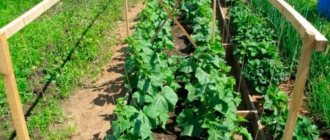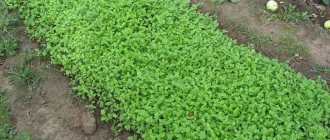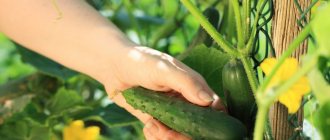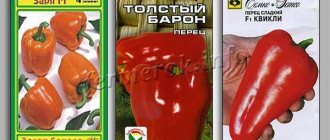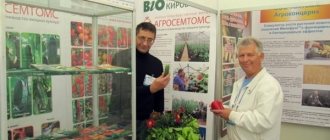Features of the Ural region
The Urals are classified as risky farming zones. Very often the harvest does not meet the requirements of farmers, which is due to climate conditions. The main problem that gardeners face is early cold snaps and even frosts, a short period of warm weather.
The climate of the Urals is sharply continental and in order to minimize the risks when growing garden crops, including cucumbers, it is worth paying attention to several recommendations when choosing varieties and growing them.
Cucumbers for the Urals must be self-pollinating (parthenocarpic)
- You need to plant several varieties and hybrids (among the varieties you need to have at least 1-2 hybrids, because they are more viable). At the same time, it is worth taking both already known, tested types and new ones. This will make it possible to identify, perhaps, some varieties that are more suitable for cultivation in this region.
- Varieties and hybrids are selected only those that can grow in the Urals. Main qualities: frost resistance, strong immunity (especially to fungi), short ripening period.
Important!
Late types of cucumbers are not recommended for the Urals. They simply will not have time to ripen before the onset of cold weather.
- At least 1-2 species planted in the country must be self-pollinating (parthenocarpic). The reason is that there are not many sunny days when bees actively pollinate plants in the Urals. This means that cucumbers that need pollination may not produce a harvest at all.
- For open ground, the most viable varieties are selected, strong, ultra-early, which will certainly have time to produce a harvest even with a lack of sun. For greenhouses, you can choose less strong varieties of cucumbers, with a longer ripening period, but self-pollinating! Otherwise, you will have to pollinate them yourself. It is possible, but the work is painstaking.
Taking into account the recommendations proposed above, it is possible to grow a full-fledged, abundant harvest in the Urals.
Useful tips
To get a harvest, you should take into account the key characteristics of this vegetable and not lose sight of the weather features in our region, namely: unpredictability, the possibility of frosts until mid-June, periods of long cold spells in the middle of summer. That's why:
- We choose early-ripening zoned hybrids, which are characterized by resistance to various adverse weather conditions.
- To get early cucumbers, we plant them not with seeds, but with seedlings.
- We protect the cucumber beds from possible frosts.
- We provide cucumbers with a temperature not lower than +18ºС.
Otherwise, the methods of cultivating cucumbers in the Urals do not differ from the basic rules for caring for this popular vegetable.
The best varieties of cucumbers for open ground in the Urals
Also check out these articles
- Best Egg Breeds of Chickens
- Bee family
- How to light a smoker for bees
- Flowering shrubs
When selecting hybrids and varieties of cucumbers for the Urals, you need to ensure that they are intended specifically for such a climate.
The best varieties of cucumbers for open ground in the Urals
- “April F1” is a hybrid for open ground, but can also be cultivated in greenhouses. Mid-season, the crop can be harvested already 50 days after the sprouts appear. The bush is strong and resilient. Approximately 8-12 greens are formed in a node. There is immunity to olive spot and common mosaic. Cucumbers grow up to 200-250 g, about 20 cm. The skin is lumpy, dark green. The pulp is light and juicy. Zelentsy for universal use.
- “Altai gherkin F1” is an early-ripening species, ripening is observed in 40-45 days. Zelentsy 75 g, small, beautiful, with green skin and rich aroma. Used for salads. They have a pleasant sweetish taste and a crunch is heard when biting.
- “Erofey” is a bee-pollinated species created for the Urals and areas with a similar climate. Mid-season, greens are picked 50 days after the sprouts appear. This is a cold-resistant species, viable even in cloudy weather. The bush is branched and strong, but the cucumbers themselves are small, up to 7 cm, gherkin-type. I have good immunity. Fruits of universal use.
Interesting!
The thorns on young cucumbers are needed to remove excess water from the fruit.
- “Competitor” is a variety for open ground, but is also suitable for film shelters. It has high immunity and good productivity. Cucumbers ripen in 45-50 days, weigh about 125 days, 12 cm each. The taste is pleasant, cucumbers are suitable for pickles, but they are also very tasty in fresh salads.
- “Masha F1” is an early parthenocarpic species (40 days). Flowering is bouquet, about 6-7 green plants are formed in a node. It is undemanding to the cultivation method, has an extended fruiting period, and good yield. Gherkin-type cucumbers, dark green in color, do not taste bitter. Immunity to many fungal diseases is noted.
- “Muromsky 36” is an early-ripening, bee-pollinated type of cucumber for the Urals. Gives the first greens on 35-40 days. Is immune to many diseases. The fruits are tasty, small in size 6-9 cm, elliptical, resembling an elongated egg. The peel is not hard, light green with white stripes.
Late-ripening cucumbers for Ural greenhouses
As reviews from gardeners show, even late-ripening cucumber varieties can be cultivated in greenhouses in the Urals. Due to the instability of weather conditions characteristic of the Urals, the main requirement for this category of varieties is relative unpretentiousness to lighting and temperature conditions. To prevent crop losses due to a sharp drop in temperature, it is recommended to grow such varieties in heated polycarbonate greenhouses. Ural gardeners recommend cultivating varieties in greenhouses:
1. Having planted “Hercules” cucumbers in a greenhouse, already on the 63rd day you can harvest a harvest of white-thorned salad-type greens, the length of which reaches 17 cm and weight – 170 g. Being the owner of female and male flowers, this variety can serve as a pollinator for other bee-pollinated varieties.
Cucumbers "Hercules"
Attention! Among the disadvantages of the Hercules variety is the need for manual pollination.
2. “Forward” is a smooth-fruited parthenocarpic, ripening only in August. It is a medium-sized vine with a group ovary - 3 crescent-shaped cucumbers, up to 22 cm long each. Intended for fresh consumption, has taste characteristics.
3. Of the late-ripening varieties, the hybrid “Santana” is most suitable for canning, capable of bearing fruit from 53 days until frost. Its 6-9 centimeter greens are distinguished by good taste and a genetic lack of bitterness, and the ability to grow even under unfavorable conditions.
In greenhouses in the Urals you can grow cucumbers with different ripening periods
4. “Seryozha” is a highly productive salad-type cucumber that begins to bear fruit only on the 74th day. In one node it forms up to 3 ovaries, which allows you to collect at least 20 kg from 1 m². Greens are up to 18 cm long, have smooth skin and a pleasant taste. Tolerant to lack of lighting, therefore recommended for winter-spring greenhouses.
According to gardeners, in the greenhouses of the Urals it is possible to cultivate cucumber hybrids with different ripening periods, thereby providing yourself with a harvest from spring to autumn. At the same time, they note that the use of ultra-fast ripening varieties is the most cost-effective.
The best varieties of cucumbers for greenhouses
Cucumbers for greenhouses should grow without problems with limited access to the sun.
The best varieties of cucumbers for greenhouses for the Ural region
- “Marinda F1” is a parthenocarpic species of early ripening period (40-45 days). The type of ovary is bunched (6 greens in one node). Suitable for the Urals and areas with similar climates. Can be cultivated in greenhouses or in open ground. Zelentsy grow about 12 cm, weighing 110-120 g, with an abundance of tubercles. Suitable for pickles and wraps for the winter. The pulp is without voids, crispy.
- “Karelian F1” is an early species that produces fruits already 40 days after the sprouts appear. The fruits grow up to 10 cm. The hybrid does not require pollination. The bushes tolerate cold and heat well. Productivity is high. Universal use.
- “Emelya F1” is a mid-season species for greenhouses that does not require pollination. The harvest ripens in 40-45 days. Cold resistant. The fruits grow up to 5 cm, weighing about 150 g. Purpose: salad. The skin is thin and you can hear a crunch when you bite it. The taste is juicy, sweetish, not bitter. Productivity per year 16 kg/sq.m. m.
- “Chernomor F1” is a mid-early species. The first harvest can be harvested after 50-55 days. The fruits are elongated, up to 10 cm, weighing 40-70 g. Bred for the Ural climate. Does not require pollination, suitable for greenhouses and film shelters. There is resistance to peronosporosis and bacteriosis. The harvest is used for canning.
Interesting!
Cucumbers are a dietary product. There are only 150 calories per kilogram of vegetables!
Late-harvesting cucumbers recommended for the Urals
Despite the fact that such crops cannot be harvested for a long time, the quality characteristics of the fruit are appreciated by all gardeners.
Marinda
Distinctive features of parthenocarpic: excellent yield (up to 27 kg/sq.m) when grown in protected soil, unpretentiousness to climatic disasters, disease resistance, versatility of fruit use. The bushes grow compact, so gardeners can easily care for them.
Cucumbers begin to ripen on the 50th day. The female hybrid has a bunched type of flowering. Gherkins are distinguished by their small size (up to 100 mm in length), lack of bitterness in both the pulp and skin, sweet taste and delicate aroma. They are stored for a long time and used for any purpose.
Erofey
These plants require pollination to produce fruit. Therefore, when growing in greenhouses, where insects rarely fly, you have to perform this procedure yourself. However, the culture's resistance to cold and lack of light, as well as high immunity to disease, are advantages for many. The fruits can be harvested 50 days after the sprouts hatch. On developed, spreading bushes, gherkins grow no more than 70 mm long. They can be eaten fresh and used in canning.
Hercules
The hybrid type crop is perfectly suited for growing in different regions. But pollination also requires the help of bees or the gardener himself. Dates for the start of ripening of greens: 55...65 days. They grow up to 200mm in length and are mainly used for making salads. In greenhouses it is possible to get up to 40 kg from 1 sq.m of bed. Hercules is characterized by endurance and resistance to diseases; the name of the cucumber speaks for itself.
Self-pollinating cucumber varieties for the Urals
We recommend reading our other articles
- Why do ficus leaves fall off?
- Strawberry variety Tago
- Cucumber variety Far Eastern 27
- The best meat pig breeds
Sap-pollinated hybrids and cucumber varieties for the Urals are in great demand. There are types for open and closed ground. Due to the fact that these crops do not require insect pollination, they are easier to cultivate and even in sunless weather they usually produce good yields.
Self-pollinating cucumber varieties for the Urals
- “Amur F1” is an early species, ripening is observed in 40-45 days. The bushes can withstand cold or hot weather without any problems. They can be grown by seeds or seedlings. Their purpose is pickling, but they can also be used for summer salads.
- “Ant F1” is a parthenocarpic, early species. After 35-39 days you can taste the first fruits. They are elongated, with tubercles, up to 12 cm. The hybrid has strong immunity to many fungal diseases.
- “Magnificent Five F1” is an early hybrid, ripening in 38-42 days. The fruits are 10 cm on average, weighing about 80 g. The shape is elongated, the skin has small tubercles. Does not suffer from cucumber mosaic virus, powdery mildew (real or false). Fruits of universal use. Productivity up to 16 kg/m. sq. The taste is sweetish, without bitterness.
- “Emerald Family F1” is an early species, ripening occurs in 40-45 days. The bushes are viable, weakly branched. The ovaries are bouquet, each containing about fruits. Cucumbers are cylindrical, up to 12 cm in length and 125 g on average. The crop is used for winter harvesting. Productivity is about 15 kg/m. sq. The taste is without bitterness, there is a lot of juice in the pulp.
- "Ekol F1" is a mid-early hybrid for cultivation in the Urals. Harvest ripening is observed 42-50 days after emergence. You can pick cucumbers until the end of September. Self-pollinating. Zelentsy are beautiful, small, up to 12 cm, weighing 50-90 g. The yield per square planting is about 20 kg of fruit. Purpose: canning.
Interesting!
The homeland of cucumbers is the Himalayan mountains. Even today, cucumbers sprout there in the wild, on their own.
Mid-season varieties of cucumbers
Varieties belonging to this category usually have a long fruiting period. Therefore, the number of such crops in a garden bed is usually at least 50%
The following varieties of cucumbers are suitable for the Urals when grown in a greenhouse:
Dynamite
A hybrid that appeared not long ago quickly gained popularity among gardeners. It is productive, resistant to viruses and fungi, immune to ultraviolet deficiency, and cucumbers have excellent quality characteristics. The fruits begin to ripen one and a half months after germination. Their length: about 130 mm, weight: 120...130 g. The bushes do not need pollinators. They grow up to 2.1...2.5 m in height. One embryo is formed in each sinus. Cucumbers are suitable for fresh consumption and for heat treatment.
Karelian
With proper care, the first harvest from this parthenocarpic hybrid can be harvested 42...46 days after germination of the plants. Karelian is not picky about temperature conditions, which makes it possible to cultivate it in regions with harsh climatic conditions. It is also resistant to diseases. The fruits of the crop grow up to 100 mm in length. Their purpose is universal. The yield is 15…16 kg.
Connie
These cucumbers are loved by those who love preparations. Calibrated gherkins, about 80 mm long, are very tasty and aromatic. Their flesh is dense. Voids do not appear even after heat treatment. During the season you can collect up to 16 kg of crispy greens. The fruiting period is 3.5...4 months. Connie's bushes grow tall, but medium spreading. The ovaries are planted in bouquets (up to 9 pieces in a node); there are no empty flowers.
Baby mini
The fruiting period begins 50 days after the formation of the first leaves on the sprouts. A high-yielding (up to 16 kg) hybrid does not require pollination. It belongs to the determinant type; the bushes do not grow above 1 m in height. Despite the strong branching of the plants, they do not need to be formed and tied up due to their miniature size. The length of the gherkins: about 100 mm, their weight: 120...150 g. Crispy cucumbers can be used for various purposes.
Reviews from gardeners about cucumber varieties for the Urals
It is possible to grow cucumbers in the Urals if you select the right varieties and follow all agricultural practices.
- Boris Kelman : “More than 3 years ago, my wife and I began to get involved in growing a variety of crops in our garden. At first they were afraid to plant cucumbers, because in the Ural region the weather is not stable, and they might simply not ripen. But, as it turns out, growing them is not difficult. For planting we take such varieties and hybrids as “Masha F1”, “Amur F1”, “Competitor”. We always plant using the seedling method and for the first time we make an impromptu greenhouse. Cucumbers continue to grow until stable warm weather. The yield is sufficient for both food and spinning.”
- Oleg Savchenko : “I love gardening, but since I live in the Ural region, not all crops are available for cultivation. I first started growing cucumbers when I built a good greenhouse. I haven’t even tried before, because our summers are short and there are few chances to grow a quality crop. In the greenhouse I plant varieties of cucumbers for the Urals “Marinda F1”, “Magnificent Five F1”. Problems arise during cultivation, but they can be overcome, in any case, in greenhouses the crop has time to ripen, fruiting is extended and the taste of greens is pleasing!”
- Liliya Zernichenko : “Although cucumbers are a heat-loving plant, they grow just as well in the Urals as in the southern regions, if you follow certain rules. For planting I always take hybrids (“Ant F1”, “Chernomor F1”, “April F1”). I cultivate both in open and closed ground, but only through seedlings. It is very important to observe fertilizing and timely care, otherwise the growth of bushes is inhibited and the yield is reduced. I harvest the crop in several stages. With normal care and choice of variety, the harvest is even enough for sale!”
Cucumber seeds of Ural selection
Being an Indian liana by origin, the cucumber is not enthusiastic about the Russian cold. But plants have no chance against human desires, so the cucumber had to adapt to the harsh conditions of the Ural region.
The selection of Ural cucumbers was aimed not only at productivity, but also at frost resistance in Siberian conditions. Today, sufficiently frost-resistant varieties have already been bred that can grow even in open ground in the conditions of the Trans-Urals. Although even these varieties grow in open ground in the summer. In spring it is better to keep them under film.
At the beginning of germination, cucumbers require a lot of heat, so experienced gardeners often put fresh horse manure under the seeds. This is the only type of fresh manure in which plants can be planted. At the same time, horse manure that has dried to a dry pellet is no longer suitable for anything other than mulching.
Super bunched hybrids with weak branching
Another type of super-beam hybrids. There are a lot of ovaries in a bundle - in one node there are up to 10-12 pieces! An ideal option for those who are comfortable getting a bountiful harvest in a short time: the mass yield of fruits lasts 30-40 days. The secret of the record speed is simple: at the time when the central vine gives up the bulk of the harvest, the side shoots quickly grow - they are short, so they begin to bear fruit as quickly as possible. It is also necessary to add that such hybrids require almost no shaping.
Planting methods
A hybrid sprinter requires compliance with a number of rules during the landing process. They depend on how cucumbers are grown - seedlings or seeds. We will consider each option separately.
Through seedlings
The transplanting process is very stressful for many sprouts. They get used to growing in the same conditions, so after transplanting to a permanent place it is difficult to take root in new conditions. To make it as easy as possible for seedlings to adapt to a new location, it is initially better to use garden soil, previously disinfected and fertilized, for sowing seeds.
In any case, the substrate for seedlings and the soil in the garden bed should be similar in quality and characteristics. If, when transplanting, you do not take into account the characteristics of the variety and plant seedlings that grew in light and fluffy soil in clay soil without fertilizers, fruiting will be delayed, and the number of ovaries will be small, and therefore productivity indicators will suffer.
To prevent such consequences, it is worth digging up the bed in advance and adding fertilizer to it:
- rotted manure, compost - 6-8 kg per 1 sq. m;
- ash – 200-300 g per 1 sq. m;
- ammonium nitrate – 2-3 tsp. per 1 sq. m.
Seedlings with 3-4 true leaves can be transplanted into such soil. If seeds for seedlings are sown in early March, then work on transplanting seedlings into the ground can be carried out already at the end of May or beginning of June.
On the day of planting, the weather must be sunny and calm, so that the soil in the garden bed warms up from the sun to +13...+15°C. Such conditions for seedlings will be comfortable, so the stress from changing the place of growth will be minimal. If you transplant in extreme heat, windy weather or rain, the seedlings may die altogether, unable to adapt to the new place.
So, on the right day, the seedlings can be transplanted into the beds, adhering to the following scheme:
- the distance between bushes in a row is 40-60 cm;
- aisles between rows – 70-80 cm.
Taganai F1 is a climbing plant that grows freely without support or trellises, but requires sufficient space for growth. Thickened plantings significantly increase the risk of disease development, especially in regions with a humid climate.
Direct sowing
In regions with a temperate climate, work can be carried out in the last ten days of May, so that the first harvest of greens can be obtained in the first week of July. In the case of direct sowing of seeds in pre-prepared soil, the following parameters must be taken into account:
- growing location – sunny, protected from drafts;
- soil temperature in a greenhouse or in a garden bed – within +13…+15°C;
- seed placement depth – 6-7 cm.
After planting the seed, the area should be watered generously with warm water.
Popular varieties and hybrids in 2018
Cucumbers for the greenhouse - varieties best for the Urals:
Arina F1
A hybrid with increased productivity, for planting in greenhouses, greenhouses, and open areas. The plant is powerful, with rapid development, quickly adapts to a cool climate. Even with a lack of sunlight, the side shoots develop well. Plants are resistant to a number of major diseases.
The cucumbers are bright green in color, with large tubercles and light spines, 15-17 cm long. The taste is good with characteristic freshness without bitterness, the harvest can be used for cooking, pickling, pickling.
Note! When to plant cucumbers in a greenhouse in the Urals? The Arina hybrid is first planted as seedlings in the second half of April, and in greenhouses planting is carried out from May 15 to May 25. Plants are placed in open beds from June 5 to June 10.
In closed structures per 1 sq. m there are 2-3 plants, in open areas 3-4 seedlings.
Karapuz
Bunch mini-gherkin with female flowers. From 2 to 5 ovaries are formed in the nodes. The Karapuz variety has a long fruiting period, the shoots constantly grow, forming new ovaries. The plant actively develops even in moderate temperatures. The greens are slightly tuberculate, up to 8 cm in diameter, with a rich green hue. The fruits practically do not outgrow, the taste is good, cucumbers are used for fresh food and preparations.
Note! Plants of this variety are not susceptible to mosaic virus, powdery mildew, bacteriosis, or olive spot. Seeds should be planted in the greenhouse after May 15, in ordinary beds in early June.
Dynamite F1
A new powerful hybrid that thrives in low sunlight and is highly productive. The plant is bred for harvest in greenhouses, hotbeds and balconies. The harvest ripens early, 45-50 days are enough. The fruits are tuberous, weighing up to 130 grams, with a characteristic cucumber taste without bitterness. Dynamite F1 is resistant to major diseases; seeds are sown for seedlings after April 20. If planting is planned immediately in a greenhouse, then sowing is carried out in mid-May.
Important! To get a rich harvest of vegetables in the Urals, seeds of the Siberian series or the Ural summer resident variety are suitable.
Greenhouse varieties
Greenhouses are irreplaceable assistants for gardeners in growing heat-loving cucumbers. A hybrid specimen with short lateral branches that does not need pinching is suitable as a greenhouse inhabitant. This type usually does not thicken and, accordingly, is not susceptible to fungal diseases. Here is a brief overview of the varieties most suitable for greenhouses:
- Emelya F1. Ripens quite early in less than 40 days. Productivity is high, the taste of medium-sized fruits is exquisite. Emelya is consumed fresh and salted.
- Dynamite F1. Ripens early - in 41-42 days, it is grown all year round. Able to pollinate itself. The fruits are compact.
- Hercules F1. One of the most late-ripening species: the fruits take more than 2 months to ripen. Gives a large harvest and has stable immunity. Needs artificial pollination
In greenhouses in the Urals, farmers also grow cucumber varieties such as Garnet and Zarya. These cucumbers are suitable for glass greenhouses. If the greenhouse is poorly lit, it is better to choose Rykovsky, Domashny, Willow - varieties that are shade-tolerant and resistant to temperature changes.
Separately, there are early varieties of cucumbers suitable for the Urals: Suomi, Valaamsky, Sarovsky. The Valaam hybrid copes well with bacteria, destroying them in the bud and preventing them from reaching the rhizome. It is valued for its early germination and frost resistance, limited fruit growth and long fruiting period.
A distinctive feature of Sarov is the bouquet type of fruiting: several cucumbers in each bosom. It is early ripening and has short shoots, valued by the Urals for its ability to grow in dark and cold conditions.
Suomi is chosen for its resistance to viruses and insect pests if the farmer is interested in long-term and bunched fruiting.
How to grow cucumber seedlings
Cucumbers Multifruit
To plant cucumber seeds of the best varieties for the Urals, make shallow holes and place a couple of seeds in them. It is possible to immediately use separate containers so as not to damage the roots of the plant when transferring them to the garden bed. Shoots appear at an air temperature of +25 degrees. In this case, the soil should be moist all the time. When the plants have 4-5 true leaves, the cucumbers can be transplanted to open areas or greenhouses.
Note! If the soil used is new, then fertilizing is not needed; if the soil is from the garden, then a week after the sprouts appear, the cucumbers are fed with nitrogen-containing fertilizer.
Slow growth of gherkins and pickles
For reference: pickles are cucumbers 3-5 cm long, and gherkins - 5-7 cm, in extreme cases up to 9 cm. In order to consistently collect pickles from the garden, you need to regularly visit the dacha, since greens even from the best hybrid eventually outgrow. You missed the moment, and now in front of you, instead of charming crispy babies, there are plump green boars. But it was like that before! Now it is not necessary to harvest every day, since there are hybrids in which the growth of greens is slowed down. Coming to the greenhouse once a week, each time you will find a consistently rich harvest of pickles and gherkins, no overgrowth! Therefore, we recommend that all summer residents who want to get a consistently successful harvest of small cucumbers choose hybrids that have slow growth.
'Millionaire F1'
Such unique hybrids include 'Millionaire F1'. What else good can you say about him? Start bending your fingers... Firstly, it is early ripening - we think there is no need to explain what this means. Secondly, it is super-beamy - that is, you are guaranteed a rich harvest. Thirdly, with limited branching - that is, it practically does not require shaping. Fourthly, high-yielding - the yield of pickles or gherkins is uniform, each node has 9-10 ovaries, and the greens are poured sequentially.
Cucumber 'Millionaire F1' Fifthly, 'Millionaire F1' is practically not afraid of diseases - it is resistant to the common cucumber mosaic virus and olive spot, and tolerant to powdery mildew (including downy mildew). It is also worth adding that the cucumbers themselves are surprisingly good: strong, small (8-12 cm), with classic large tubercles and white spines. Fresh ones will delight you with a bright cucumber aroma and sweet pulp, while canned ones will delight you with excellent taste, appetizing crunch and the absence of voids.
Is active branching a plus or a minus?
Undoubtedly, it is a plus if bundle hybrids have this quality. They form small bunches of ovaries at each node - up to 3 pieces, but this does not mean that the cucumbers on the bush can be counted on one hand. The plants turn out to be powerful, with a developed root system and quickly growing side shoots, so there are always a lot of greens on the bush. Such hybrids will appeal to gardeners who permanently live in their country houses, as they will be able to pick fresh cucumbers almost every day.
Bunch hybrids have several ovaries in one node. And the breeders have also done a great job and “programmed” the hybrids of this series for incredible resistance to specific diseases and high cold resistance.
'Devotion F1'
This is a mid-early hybrid with a female flowering type, one of the best representatives of the series of bunch hybrids. It is suitable for growing in open and protected ground.
'Devotion F1' will bear fruit until late autumn. The hybrid will appeal to those who want to receive cucumbers until the very last. “The fields are already compressed and the groves are bare...”, and “Devotion F1” keeps giving out new and new portions of greenies. And cold August nights with fog and dew, which send many hybrids to a well-deserved rest, are not a hindrance to him! And this is possible thanks to the work of geneticists who have equipped the hybrid with resistance to typical autumn diseases - powdery mildew, cucumber mosaic, as well as olive spot.
Yield varieties
The goal of every farmer is to obtain a fruit harvest that is rich not only in quality, but also in quantity.
- Zozulya F1. Ripens quickly: already 40-42 days after planting, you can harvest the fruits. Zozuli’s plants are very large, weighing up to 330 g. Cucumber is immune to tobacco mosaic and white rot viruses.
- Herman F1. It is one of the earliest: it only takes 30 days to ripen. The fruits are small in size, ideal for canning.
- Courage F1. Has the ability to self-pollinate. It takes a long time to ripen: at least 8 weeks. The average weight of one fruit is 175 g. Courage can produce the greatest yield when grown in greenhouse conditions.
- Masha F1. An early ripening variety of cucumbers. The advantages are a large amount of harvest and immunity to viral diseases. Gherkins are suitable for pickling

